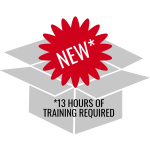The toolkit is designed for people who solve specific performance problems in a specific workplace where the errors and best practices can be concretely identified. It’s less applicable to off-the-shelf courses or education. In those situations, the workplace and problems…
Search Results for: information
Learning objectives: Our frenemy
Does that learning objective really want what’s best for you? Conventional objectives aren’t always our friends. These three questions will help you set boundaries with our frenemy. Learn more.
“It’s new, so everyone needs training on it.” Nope.
“This thing is new, so of course everyone needs to be trained on it.” Your client is heading toward an information dump. Steer them to a better solution with these tips. Learn more.
Scenario design
In this four-week live, online course, you’ll apply action mapping and scenario design techniques to a project from your job, learning as you work. The course takes you from defining the performance problem to creating a prototype activity for a…
Make learners think!
“You should tell learners what they need to know, and then let them practice with an activity.” That’s how we’re “supposed” to design learning, but what if we disobey? What if we plunge people into an activity without first telling…
Jedi mind tricks for learning designers
Your client thinks training will solve their problem, but they haven’t even defined the problem. Your subject matter expert wants you to present their favorite content, but you suspect it will just waste time. What can you do? You can…
Action mapping overview
Do you want to have a real impact on your organization? Get learners’ respect with action-packed materials that make their jobs more satisfying, while helping your organization meet its goals. Action mapping is a visual approach to instructional design that…
How to make mandatory training relevant
How can we make mandatory training actually useful? With some disobedience, questions, and a sneaky workaround to “everyone must be exposed to all the information.” Learn more.
Privacy policy
Effective Date: 03 May 2023 Notice Version: 1.1 This document governs the privacy notice of our websites actionmapping.com and cathy-moore.com. It describes how Action Mapping SRL (known as „Action Mapping”, „We” or „Site”), the owner and operator of actionmapping.com…
3 branching scenario examples to give you ideas
Here are some sample scenarios showing different ways to provide background information, plus a unique way to show the consequence of a decision. Learn more.
2 types of elearning scenarios: branching and mini
What type of scenario do you need? Will a one-scene mini-scenario be enough, or do you need a branching scenario? Learn more.
4-step process for writing scenarios for training
Want to write a scenario? Don’t just jump in. You’ll save time and create a stronger story if you follow this process. Learn more.
How to design software training, part 2: Practice activities
Here’s an alternative to traditional software training: Create self-contained activities that help people learn by doing, and make the activities available on demand. Learn more.
How to design software training, part 1: Do everything except “train”
“How can I design training for new software?” Maybe training isn’t even necessary. Let’s look at some alternatives. Learn more.
Start here
What can you learn here? Learn how to: Identify the real causes of a performance problem in the workplace Decide whether training is part of the solution Design activity-rich training that helps people change what they do, not just what…
Job aids and worksheets for Map It readers
Find the best solutions with these job aids Steer your clients away from an information dump with these easy-to-use flowcharts. Action mapping: Summarizes the design phases of action mapping, from setting a goal to deciding how to provide information. Will…








